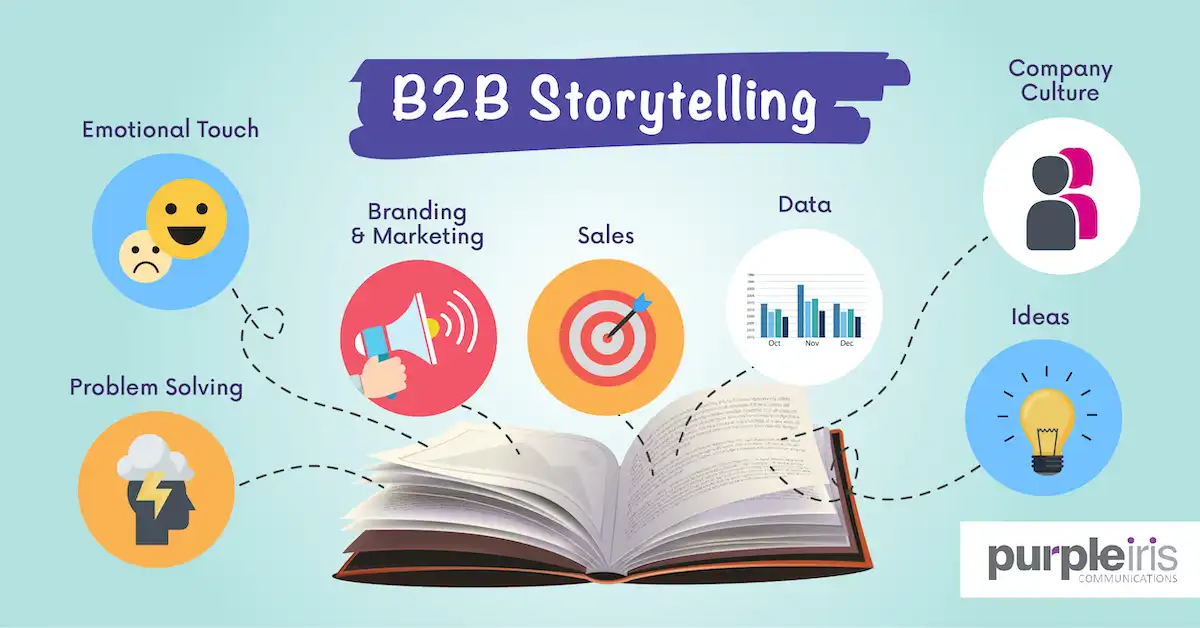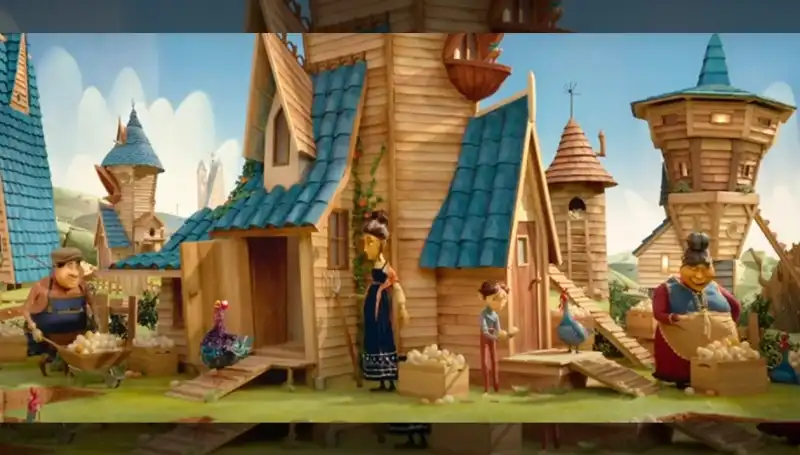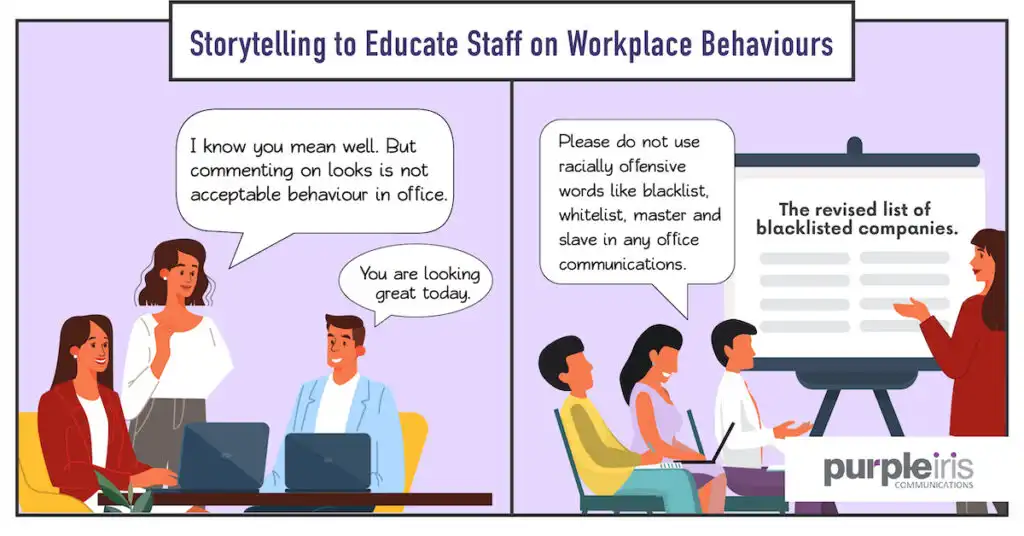
How to use business storytelling to improve effectiveness of B2B communications
05 September 2020
Panchalee Thakur
A story that sticks as opposed to facts that need the effort to remember.
A technique that pulls the strings of your heart as opposed to one that satisfies the logical reasoning of your brain.
B2B marketing has mostly counted on the second approach – reason and judgement based on facts and figures to drive home a message. Human emotions did not count much. However, in recent times, B2B marketers are weaving stories around facts to appeal to both the heart and the brain.
Some of the biggest enterprise brands, such as Hewlett Packard, FedEx, Microsoft, IBM and Cisco, have used business storytelling to talk about their brand, products and work culture.
At a time of data deluge and information overload, business storytelling has immense potential to elevate a brand’s presence and ability to form a strong emotional connection with its audience.
Business storytelling – educate customers, form emotional bonds, elevate the brand
Stories have always been used as a means to educate — from those that inculcate values to the ones that help us make sense of vague or complex ideas.
The use of stories in marketing is not new. In fact, the roots of business storytelling sprouted sometime in the late 1800s. John Deere, the publisher of a magazine called The Furrow, is believed to have used storytelling to educate farmers on how they can use new technology in farming.
Stories are a great way to form an emotional connection with the audience, and make an idea more relatable. They can evoke a range of emotions that statistics alone cannot — happiness, love, surprise, fear, and pride.
Hewlett Packard used fear packaged with humour in Hollywood style entertainment in its video campaign, The Wolf, to convey a brand message. The message was clear and simple: cyber criminals are lurking in the background and in the most unlikely of devices, which is the printer, and we need to be prepared for it.

Christian Slater in the HP campaign, The Wolf.
Microsoft uses Story Labs, an online platform, to talk about its products and culture through the experiences of its people. The stories convey a strong sense of passion and pride behind the work that its employees do.
Research has found that companies that build an emotional connection with their customers perform 85 percent better than their competitors. According to a study by Google and CEB Marketing Leadership Council, over half of B2B buyers are more inclined to make a purchase if they feel an emotional bond with the brand. Google is also a big proponent of the storytelling approach.
Business storytelling is the vitamin that your brand needs from time to time.
- It adds power to a company’s existing content creation machinery. Now you have a new format to explore.
- This format is refreshing and engaging for your buyers and prospects.
- It lets you demystify concepts that are difficult to comprehend and make them more relatable.
- It helps you form deeper connections by tapping on human emotions. Even in a B2B environment where data drives thinking, the emotions of decision-makers can tip the balance in your favour.

A new animated corporate video by Standard Chartered talks about the bank's role in driving global trade
Here are two examples of how you can add zing to your content with storytelling
You do not need Hollywood quality script writing and deep pockets to tell a powerful story. Instead you need a bit of imagination and the willingness to break the mould and experiment with a new idea.
In this blog, we present two simple ideas that you can use to convert data-driven, information-loaded pieces of content into a narrative with an emotional appeal.
The first example is that of a case study.
In a traditional case study, we break the information into the following logical steps:
- An overview of the market or a description of the client to set the context
- The challenges that the client had faced, which led them to us
- The solution that we provided to solve those challenges
- The benefits that the client has derived from those solutions
- And last, a testimonial in which the client vets the solutions and the benefits
Now let’s see how we can use storytelling within this format.
We often forget that it is not a company or a department that faces a challenge, but the people working there. So start thinking of each problem from a human angle. For example, a company’s finance and accounting systems were fractured, with no two departments following the same processes. That led to duplication of work, longer time to complete a task and lack of standardisation in reports. From the company’s point of view, it was an inefficient system that reduced productivity.
Now let’s put a human face to it and see how the narrative changes.
First, identify people in the organisation who actually use those systems, and not just the business or function head who will give you the business side of the problem.
Next, ask those end-users the difficulties that they faced on a day-to-day basis and how the new solution is empowering them. Challenges like duplication of work or longer processing time will now take on a new meaning. The end-users will tell you about their frustrations. How their time went in just managing routine tasks and they could not focus on other tasks, which made them look bad in front of their manager. Similarly, they will talk about being liberated from the mundane and finding higher job satisfaction after using your solution.
Thus, by adding storytelling, you will be putting a human face to business metrics, and making the case study more relatable and memorable.
You can also read our previous blog on how to give a human face to a case study.
The second example is that of an internal newsletter.
Newsletters are a great way to keep your team members informed and motivated. Managers use this platform to talk about changes in the organisation, inculcate the values that the company stands for, provide recognition to team members and inspire them.
However, you may find the number of views for your newsletter dipping. Over time, employees can get jaded with the format and content. You will then need to add zing to it from time to time.
Moreover, every workplace now has a large number of millennials and Gen-Zs. Research shows that the younger generation of employees responds better to visual forms of communications as opposed to text. Over 70% of the younger generation reported that visuals help them in making purchasing decisions. On the other hand, visuals were important in helping readers better absorb the content by up to 400 percent.
How about combining the visual medium with some fun storytelling in your newsletter?
Think of cartoon strips to disseminate information that is dull or explain concepts that are vague and esoteric.
Consider this situation: you need to disseminate information about a new policy on workplace etiquette. You want the team to understand how that policy translates into acceptable and non-desirable behaviours on the ground. Is complimenting someone on his or her appearance acceptable? What does the policy say about cracking jokes in office?
Instead of a table of dos and don’ts that is easy to forget, convert the information into a cartoon strip. Use the cartoons to depict scenes in the office and how certain behaviours will attract censure or disciplinary action.

In this blog, we covered different ways to improve employee engagement through newsletters during COVID-19.
Follow these simple steps
Business storytelling can raise the effectiveness with which you deliver your message. Before you start infusing it into your content, consider this approach.
- Identify the types of content that will benefit from storytelling. Think of content that will lend itself well to anecdotes to drive home a point. Besides case studies and newsletters, explore storytelling for your business presentations, blog posts, social media updates, and corporate and product videos.
- Explore using it for certain topics and themes. Storytelling adds value to topics that are otherwise dry or difficult to understand. For example, a product video packed with technical information will get more engagement if you talk about the features from the viewpoint of a user.
- Think of the different media you can use. You can tell stories through videos, text and images. A combination of text and visuals such as cartoon strips, infographics and GIFs is a highly effective method.
Business storytelling is a simple, time-tested and effective way to attract and sustain the interest of your audience. You do not need the calibre of JK Rowling to weave magic into words or the brilliance of Martin Scorsese to keep the audience spellbound. Begin by thinking how you can bring out the human element in the content that you produce. Look for anecdotes and scenarios that you can use to capture the emotions of your audience and make the content memorable. And take the help of experienced content partners who can add value to your work.
How can we help? Read about our blog writing and other content services and tell us what we can do for you.
